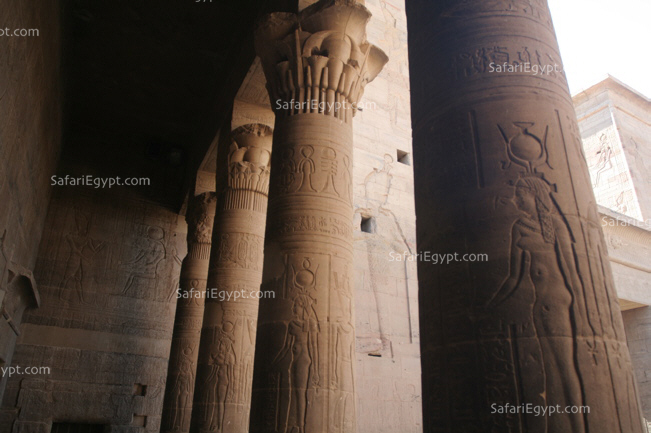Ancient Egyptian Art: Unrivaled
Uniqueness
Whether you're captivated by the breathtaking grandness of the
great Pyramids at Giza, astounded
by the meticulous carvings found on the entrance of the colossal
Temple of Ramses the Second at Abu Simbel, or even struck by the
impact of simplicity of the refined treasures displayed in
Cairo's
Egyptian Museum...Your endless fascination with Ancient Egyptian
Art is just a conformation with the undeniable fact that the world's
first, unique art style, stamping all artistic expression with its
unmistakable forms was born in Egypt; the land of unsurpassed artistic
masters, resulting in the creation of an exceptional, must be explored
civilization.

(Horus Temple in Edfu, Egypt)
Understanding Ancient Egyptian Art
Strangely enough, the ancient Egyptian terminology contains no word
as "Art"; however, terms such as tombs, statues, temples etc, existed
in ancient Egyptian Language. This translates to the fact that developing
artistic creations was simply a functional form of religious cult
manifestation and continuation, and accordingly, art in ancient
Egypt was classified into: Firstly; "Underworld" Art or sometimes
referred to as "The Deadís" Art represented in tombs, mummy cases,
models of possessions one owned during his lifetime, which would
later on be buried with the person as he dies. Secondly, the "Gods'
and Priests'" Art, reflected in temples, statues and paintings,
which were believed to be representations of how one will look like
or live in the after life. Finally yet importantly, "Domestic Art"
manifested in necessities found in homes, such as furniture, fine
jewelry, musical instruments, dishes etc. It was the Kings, and
renowned Priests, who artistically thought out structuresí plans,
and slaves were called from all over the ancient world; Asia, Phoenicia,
Africa to turn the plans into original artistic creations.
The common Characteristic in all
Egyptian Art
Sculptors settled along the rough cliffs of the Nile, and used fragile
materials like glass and gold in their work. And because they had
to shape hard surfaces, such as granite and diorite, they learnt
to simply shape the outline of the body in long, unbroken lines,
making refined simplicity the characteristic of all ancient Egyptian
art from the massive pyramids to the tiniest glass vessel.
continue reading about Ancient Egyptian Art (1 -
2)
Next >>
|
|

